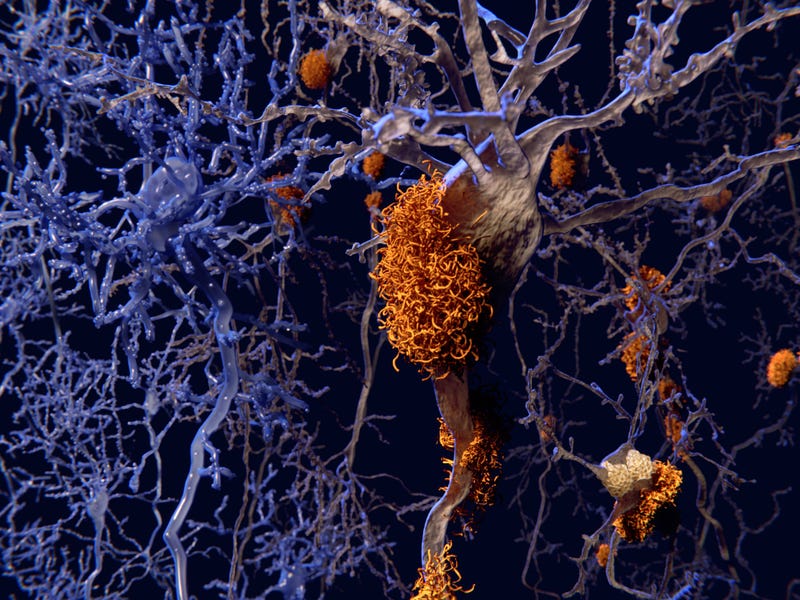
Researchers have identified 42 new genes associated with the development of Alzheimer’s disease, the most common form of dementia, according to a study released this week.
With this new data, scientists hope more “opportunities from which to develop therapeutics,” for the condition will open up, said a statement from the U.K. Dementia Institute.
In the U.S., 6.5 million people are currently living with Alzheimer’s disease. By 2050, this number is expected to increase to 13 million, according to the Alzheimer’s Association.
Alzheimer’s impacts memory, thinking and behavior. Symptoms include: difficulty remembering newly learned information; disorientation, mood and behavior changes; deepening confusion about events, time and place; unfounded suspicions about family, friends and professional caregivers; and difficulty speaking, swallowing and walking.
These symptoms typically become severe enough to interfere with daily tasks.
So far, there is no cure for Alzheimer’s and just one treatment, which is called aducanumab. This “is the first therapy to demonstrate that removing amyloid, one of the hallmarks of Alzheimer’s disease, from the brain is reasonably likely to reduce cognitive and functional decline in people living with early Alzheimer’s.”
Most people who develop the condition are 65 and older. However, according to the Alzheimer’s Association, microscopic changes begin in the brains of Alzheimer’s patients before memory loss begins.
In particular, abnormal structures called plaques and tangles have been identified as culprits behind nerve cell death that leads to memory loss and other Alzheimer’s symptoms.
“Plaques are deposits of a protein fragment called beta-amyloid…that build up in the spaces between nerve cells,” and “tangles are twisted fibers of another protein called tau…that build up inside cells,” the Alzheimer’s Association explained.
“As well as confirming previous findings implicating the proteins amyloid-beta and tau, that build up in and around nerve cells as Alzheimer’s disease progresses, the study provides compelling evidence to support a role for inflammation and the immune system in the disease,” said the U.K. Dementia Research Institute of the recent study, which was spearheaded by Prof Jean-Charles Lambert, Research Director of Inserm, the French National Institute of Health and Medical Research.
While smoking, exercise and diet can influence the development of Alzheimer’s, researchers who conducted the study also said that “heritability is high,” for the condition at around 60% to 80%. Overall, they identified 75 genes associated with increased risk of developing the condition, including the 42 newly-discovered associated genes.
“This study more than doubles the number of identified genes influencing risk for the more common form of Alzheimer’s disease. It provides exciting new targets for therapeutic intervention and advances our ability to develop algorithms to predict who will develop Alzheimer’s in later life,” said Dr. Rebecca Sims, Senior Research Fellow at Cardiff University and U.K. Dementia Research Institute co-investigator and co-leader of the study.
She also said the “landmark study in the field of Alzheimer’s research,” is the culmination of three decades worth of work.
Lambert’s research team performed a two-stage genome-wide association study of 111,326 people with Alzheimer’s, compared to 677,663 controls. Most of the study subjects were Caucasian, and study authors would like to expand the research to include other populations.
Even so, the study is the largest of its kind conducted thus far.
“The findings show for the first time that a specific biological [signaling] pathway involving TNF-alpha, a protein with an important role in inflammation and the immune system, is implicated in Alzheimer’s,” said the U.K. Dementia Research Institute. “Additionally, there is more evidence that the dysfunction of microglia, immune cells in the brain that are responsible for eliminating toxic substances, contribute to disease pathology.”
Based on the results, researchers created a genetic risk score to determine the likelihood of patients with cognitive impairment developing Alzheimer’s. For now, the score is not intended for clinical use.
“The results support our growing knowledge that Alzheimer’s disease is an extremely complex condition, with multiple triggers, biological pathways and cell types involved in its development,” said Prof Julie Williams, Centre Director at the U.K. Dementia Institute at Cardiff, co-author of the study and leader of the Genetic and Environmental Risk for Alzheimer’s disease consortium. “We are unmasking more of these causes year on year, and this also provides greater opportunities from which to develop therapeutics.”
According to the institute, the next step in finding more treatments for Alzheimer’s is to focus on specific genes identified in the study to examine how they might contribute to dysfunction or death of brain cells.
LISTEN on the Audacy App
Sign Up and Follow Audacy
Facebook | Twitter | Instagram